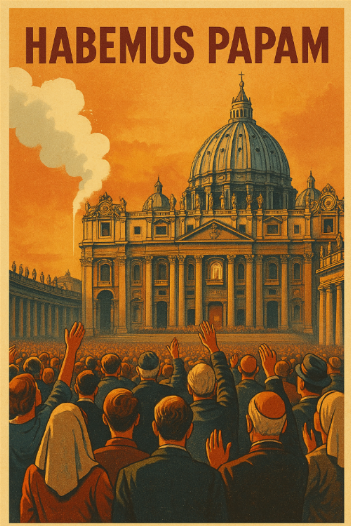Conclave, the new Pope is elected: it is Robert Francis Prevost. His name will be Leone XIV
Habemus Papam! These two Latin words echo across the Vatican every time a new leader of the Catholic Church is chosen. But behind this short phrase lies one of the most mysterious and tradition-rich elections on Earth.
⚪ What does “Habemus Papam” mean?
It literally means “We have a Pope.” It’s the phrase used by the Cardinal Protodeacon from the balcony of St. Peter’s Basilica in Rome, right after a new pontiff has been elected.
🕊️ The Ritual of the Papal Election
The process of electing a pope is known as a conclave, from the Latin cum clave meaning “with key”—because the cardinals are literally locked inside the Sistine Chapel during the vote.
Only cardinals under the age of 80 may vote, and they continue balloting until one man receives at least two-thirds of the vote.
When a decision is made, the ballots are burned with chemicals to produce white smoke, the sign that the world has a new pope. If no pope is chosen, black smoke rises—meaning “try again.”
👤 Who can be elected pope?
Technically, any baptized male Catholic could be elected. But in modern times, it has always been a cardinal. Once elected, the new pope chooses a papal name—like Francis, Benedict, or John Paul—and is immediately the head of the Catholic Church.
📡 A Global Moment
The phrase “Habemus Papam” has been used for centuries, but with live global broadcasts and social media, the moment has become a worldwide event. Crowds gather in St. Peter’s Square, news sites go live, and billions hear the announcement within minutes.
It’s a blend of tradition and technology, religion and ritual, spectacle and spiritual significance.
🔮 And what happens next?
The new pope gives his first blessing (Urbi et Orbi) from the balcony. Then he disappears into the Apostolic Palace to begin one of the most powerful—and challenging—spiritual roles on the planet.
